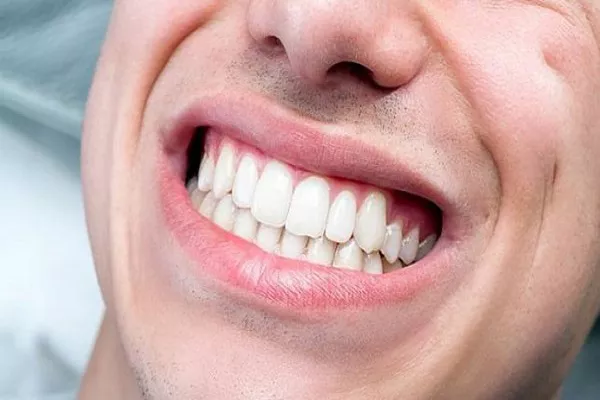Toothaches can be a real pain – literally. They disrupt our daily routines, make eating and drinking uncomfortable, and generally put a damper on our mood. While getting a dental filling is often a relief, it’s not uncommon to experience some level of discomfort afterward. Understanding why this happens and what steps you can take to alleviate the pain is crucial for a smoother recovery process.
Normalcy of Toothache Post-Filling
First and foremost, it’s essential to recognize that experiencing some degree of toothache or discomfort after a filling is entirely normal. This is especially true if the filling was deep or if there were other complications with the tooth prior to the procedure. In most cases, the discomfort should subside within a few hours as the anesthesia wears off and the tooth adjusts to the new filling material. However, there may be instances of lingering sensitivity that require additional attention.
Duration of Pain
While it’s typical for any immediate pain or sensitivity to diminish within a few hours of getting a filling, there are cases where the discomfort persists for an extended period. It’s important to monitor the duration and intensity of the pain. If it lasts longer than a few days or becomes increasingly severe, it could indicate an underlying issue that needs to be addressed by your dentist.
Home Remedies
Fortunately, there are several simple home remedies that can help alleviate toothache after a filling:
- Avoiding Extreme Temperatures: Hot and cold foods and beverages can exacerbate tooth sensitivity. Stick to lukewarm or room temperature items to minimize discomfort.
- Sensitive Toothpaste: Consider using a toothpaste specifically designed for sensitive teeth. These products contain ingredients that help block nerve signals, reducing sensitivity and pain.
- Soft Foods: Stick to a diet of soft foods for the first few days after getting a filling. Avoid crunchy or hard foods that could put pressure on the filled tooth and exacerbate any discomfort.
Pain Management
In addition to home remedies, over-the-counter pain relievers can provide temporary relief from toothache after a filling. Acetaminophen (Tylenol) or ibuprofen (Advil, Motrin) are commonly recommended for managing dental pain. It’s essential to follow the dosage instructions carefully and consult with a healthcare professional if you have any underlying health conditions or are taking other medications.
Topical numbing ointments designed for oral use can also help alleviate pain and discomfort. These products typically contain benzocaine or lidocaine, which temporarily numb the affected area, providing relief from toothache.
Oral Hygiene
Maintaining good oral hygiene is crucial for promoting healing and preventing further complications after a dental filling. However, it’s essential to be gentle when brushing and flossing around the filled tooth to avoid irritating the area. Consider using a soft-bristled toothbrush and a non-alcoholic mouthwash to clean your teeth without causing additional discomfort.
Avoid using whitening products or abrasive toothpaste immediately after getting a filling, as these can increase tooth sensitivity and prolong the recovery process. Instead, opt for gentle dental care products until the toothache subsides.
When to Contact a Dentist
While some level of discomfort after a dental filling is normal, there are certain signs that indicate a need for further evaluation by your dentist:
- Intense or persistent pain that lasts for more than a few days
- Swelling or inflammation around the filled tooth
- Sensitivity to pressure or biting that worsens over time
- Signs of infection, such as pus or a foul taste in the mouth
If you experience any of these symptoms, it’s essential to contact your dentist as soon as possible. Delaying treatment could lead to further complications and prolong your discomfort.
Preventive Measures
Toothache after a filling can be inconvenient and uncomfortable, but there are steps you can take to minimize the risk of experiencing it in the future:
Choose the right filling material: Discuss your options with your dentist to determine the best filling material for your needs. Some materials are more durable and less likely to cause sensitivity than others.
Practice proper dental care techniques: Brush and floss regularly to remove plaque and bacteria that can contribute to tooth decay and cavities. Visit your dentist for regular check-ups and cleanings to maintain optimal oral health.
By following these preventive measures and taking proactive steps to manage toothache after a filling, you can promote healing, reduce discomfort, and enjoy a healthy, pain-free smile. Remember to consult with your dentist if you have any concerns or if the pain persists beyond a few days. Your oral health is worth the investment of time and attention.
FAQs About Tooth Pain After Filling
1. How long should my tooth hurt after a filling?
It’s normal to experience some level of discomfort or sensitivity after getting a dental filling, especially if it was a deep filling or if the tooth had other issues prior to the procedure. In most cases, any pain or sensitivity should subside within a few hours to a few days as the tooth adjusts to the new filling material. However, if the pain persists or worsens after several days, it’s important to contact your dentist for further evaluation.
2. Is it normal to have bad toothache after a filling?
While some level of toothache or discomfort is normal after a filling, experiencing severe or persistent pain is not typical and may indicate an underlying issue that needs to be addressed. Factors such as the size and depth of the filling, the condition of the tooth before the procedure, and individual sensitivity levels can all affect the severity of toothache after a filling. If you’re experiencing intense or prolonged toothache, it’s essential to consult with your dentist to determine the cause and appropriate treatment.
3. How do you calm tooth pain after filling?
There are several methods you can try to calm tooth pain after a filling:
- Over-the-counter pain relievers: Acetaminophen (Tylenol) or ibuprofen (Advil, Motrin) can help alleviate toothache and reduce inflammation. Follow the dosage instructions carefully and consult with a healthcare professional if you have any underlying health conditions or are taking other medications.
- Topical numbing ointments: Apply a small amount of topical numbing ointment designed for oral use to the affected area to temporarily numb the pain.
- Avoiding extreme temperatures: Stick to lukewarm or room temperature foods and beverages to minimize sensitivity and discomfort.
- Soft foods: Eat soft foods that are easy to chew to avoid putting pressure on the filled tooth and exacerbating any pain.
- Gentle oral hygiene: Brush and floss gently around the filled tooth to maintain oral hygiene without causing additional irritation.
If the pain persists or worsens despite these measures, don’t hesitate to contact your dentist for further guidance and treatment.
4. How do you heal a tooth after filling?
Healing after a dental filling involves allowing the tooth to adjust to the new filling material and promoting optimal oral hygiene to prevent further complications. Here are some tips for promoting healing after a filling:
- Follow your dentist’s post-operative instructions carefully, including any recommended dietary restrictions or oral care practices.
- Avoid biting or chewing on hard objects or foods that could damage the filling.
- Maintain good oral hygiene by brushing and flossing regularly and attending regular dental check-ups and cleanings.
- Monitor the filled tooth for any signs of discomfort, sensitivity, or other issues, and contact your dentist if you have any concerns.






























